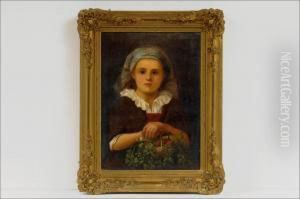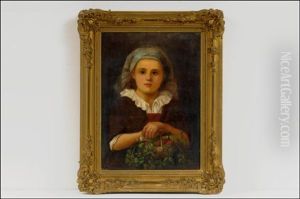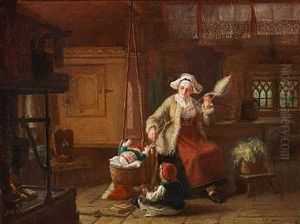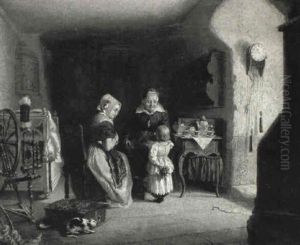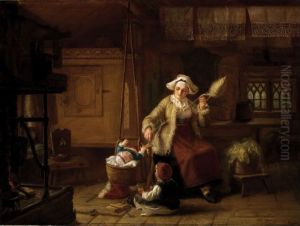Hanna Winge Paintings
Hanna Winge, née Hirsch, was a Swedish artist born on December 4, 1838, in Stockholm. She was a significant figure in the Swedish art scene during the 19th century, known for her contributions as a painter and textile artist. Hanna was part of the cultural elite in Stockholm and was married to the artist Mårten Eskil Winge, who was a professor at the Royal Swedish Academy of Arts.
Hanna Winge's artistic journey began under the instruction of her husband, from whom she learned painting, and she further developed her skills by studying under other prominent artists of the time. Her work was heavily influenced by the aesthetic and romantic movements of the 19th century, and she was particularly known for her detailed and intricate textile designs, which often incorporated natural and floral motifs.
Throughout her career, Hanna Winge exhibited her work at various venues, including the World's Fairs in Vienna in 1873 and in Philadelphia in 1876, where she gained international recognition for her talents. She was a pioneer among women artists in Sweden, challenging the traditional roles and expectations of women in the arts. Winge's contributions to Swedish art were not limited to her own creations; she also advocated for the work of other women artists and was instrumental in the formation of support networks and exhibition opportunities for female artists of her time.
In addition to her painting and textile work, Hanna Winge was also involved in the design and production of costumes for dramatic productions, which were praised for their historical accuracy and attention to detail. Her diverse talents and dedication to the arts made her an influential figure in the cultural life of Sweden.
Hanna Winge passed away on September 9, 1896, in Stockholm. Her legacy is remembered for her artistic achievements and her efforts to advance the role of women in the Swedish art community. Her work continues to be celebrated and studied, and her contribution to the arts remains an important part of Sweden's cultural history.
